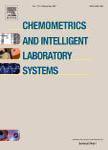版权所有:内蒙古大学图书馆 技术提供:维普资讯• 智图
内蒙古自治区呼和浩特市赛罕区大学西街235号 邮编: 010021

作者机构:CSIR Indian Inst Toxicol Res Div Environm Chem Lucknow 226001 Uttar Pradesh India
出 版 物:《CHEMOMETRICS AND INTELLIGENT LABORATORY SYSTEMS》 (化学计量学与智能实验系统)
年 卷 期:2012年第114卷
页 面:122-131页
核心收录:
学科分类:07[理学] 0804[工学-仪器科学与技术] 0714[理学-统计学(可授理学、经济学学位)] 0703[理学-化学] 0701[理学-数学] 0811[工学-控制科学与工程] 0812[工学-计算机科学与技术(可授工学、理学学位)]
主 题:Trihalomethanes Predictive modeling Artificial neural networks Support vector machines Gene expression programming Sensitivity analysis
摘 要:Formation of trihalomethanes (THMs) in chlorinated waters poses high risk to humans. Strategies for the THM control require pre-knowledge of their levels in the water. Determination of the THMs in the laboratory experiments is very tedious, expensive, and time consuming. Hence, the development of new predictive models for the THM formation in the chlorinated water will be of immense help. This research presents the potential of the artificial neural network (ANN), support vector machine (SVM), and gene expression programming (GEP) modeling approaches to forecast the THM formation due to chlorination. To develop the models, a total of 63 data collected from the literature were used, wherein five parameters, such as dissolved organic carbon normalized chlorine dose, water pH, temperature, bromide concentration, and contact time were used as the input variables. The predictive and generalization abilities of the models were comprehensively evaluated using several statistical tests. The results revealed that the ANN, SVM, and GEP models are capable of capturing the complex nonlinear relationship between the water disinfection conditions and the corresponding THM formation in the chlorinated water. The optimal ANN, SVM, and GEP models yielded the root mean square error and coefficient of determination values of 0.09 and 0.998;0.70 and 0.998;and 3.07 and 0.990 for training and 4.05 and 0.918;3.66 and 0.935;and 3.63 and 0.933 for validation set, respectively. Sensitivity analysis results revealed that initial pH, contact time and temperature were the most significant factors that influence the THM formation during chlorination process. All the three models provide fairly promising approach for the prediction of the THM formation in water during the disinfection process. SVM model performed relatively better than the ANN and GEP models. (C) 2012 Elsevier B.V. All rights reserved.